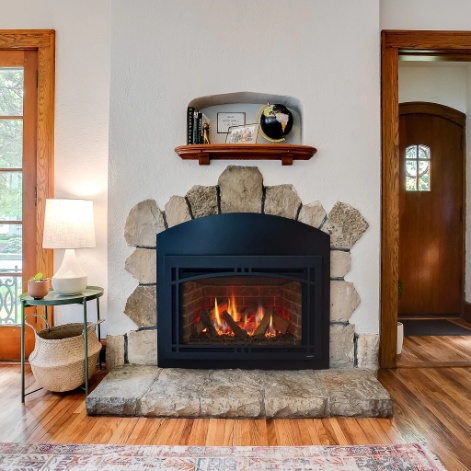Table of Contents
Wooden garage doors are a favored choice due to their enduring charm and strength. This makes them a popular option when selecting a garage door. But what is the real cost of wooden garage doors?
The pricing for wooden garage doors can fluctuate according to various significant factors.
We delve into the pivotal factors that impact the pricing of wooden garage doors.
These factors encompass material selections, design styles, dimensions, installation intricacies, maintenance demands, and lifespan.
Additionally, we draw comparisons between wooden garage doors and alternative materials.
We provide insights for cost savings and assess enduring cost implications.
We cordially invite you to join us as we unveil the genuine cost considerations associated with wooden garage doors.
Types and Styles
Wooden garage doors are available in a diverse range of styles and finishes.
These styles span from traditional and rustic to sleek and modern designs.
Each style is uniquely crafted to augment the overall aesthetics of residential properties.
The array of styles and finishes offers homeowners the flexibility to select a door that aligns with the architectural design of their dwelling.
Those inclined towards a more conventional appearance may find a wooden garage door adorned with classic hardware and intricate detailing to be the optimal choice.
Conversely, individuals seeking to infuse a contemporary flair into their abode can consider a minimalist design with modern hardware selections.
Rustic wooden garage doors, characterized by distressed finishes and rugged accents, are particularly well-suited for residences embodying a country or farmhouse aesthetic.
Factors Affecting the Cost of Wooden Garage Doors
The definitive cost of wooden garage doors is determined by a range of factors.
These factors include the selection of wood materials, the intricacy of the installation process, continuous maintenance requirements, and the overarching durability and energy efficiency of the door.
Furthermore, wooden garage doors can provide notable insulation properties and aesthetic charm.
Material and Design Choices
The selection of appropriate wood materials and design for a garage door entails assessing various types and sizes.
It also involves exploring customization options offered by diverse manufacturers and suppliers.
An extensive range of wood materials is available, spanning from timeless hardwoods like mahogany and cedar to more contemporary choices such as composite materials.
This variety caters to different aesthetic preferences and financial considerations.
Design alternatives encompass traditional panel styles as well as modern flush designs.
This provides homeowners with the flexibility to harmonize the garage door with the overall appearance of their residence.
Manufacturers and suppliers play a vital role in furnishing guidance on construction types.
They aid customers in navigating options like sectional, roll-up, or side-hinged doors to identify the optimal garage door solution.
Size and Installation Complexity
The dimensions of the wooden garage door and the intricacy of its installation can notably impact both the initial expenses and the overall installation procedure.
This provides options for do-it-yourself enthusiasts as well as individuals seeking professional installation.
For larger garage doors, a greater amount of materials is necessary.
This leads to increased costs, particularly if elaborate designs or specialized wood varieties are selected.
DIY installation may present a cost-efficient alternative for those possessing the requisite skills and tools.
However, it is imperative to evaluate the intricacy of the project and the time commitment it demands.
Conversely, engaging in professional installation guarantees a polished outcome.
It also alleviates the complexities associated with the installation process.
When soliciting quotes and estimates, it is essential to account for any potential regulations, permits, and limitations in your vicinity.
This helps prevent delays or penalties.
Maintenance and Longevity
It is imperative to prioritize proper maintenance and care to ensure the longevity and durability of wooden garage doors.
This involves adhering to a schedule of regular inspections, timely repairs, and necessary upgrades.
These practices preserve their ability to withstand changing weather conditions and retain their aesthetic appeal.
Routine inspections are instrumental in the early detection of any signs of deterioration, such as cracks or warping.
This enables prompt repairs to mitigate the risk of further damage.
Additionally, the application of a protective sealant or paint can augment the door’s ability to withstand adverse weather conditions, such as rain and sunlight.
Furthermore, considering upgrades like the installation of weather stripping or insulation can enhance the energy efficiency of the wooden garage doors.
These upgrades also contribute to prolonging their lifespan.
Such measures are essential in ensuring that the wooden garage doors remain functional and visually appealing over an extended period.
Comparing Wooden Garage Doors to Other Materials
In evaluating wooden garage doors in comparison to alternative materials, it is imperative to take into account various factors.
- Performance capabilities
- Security features
- Environmental sustainability
- Aesthetic appeal
- Cost-effectiveness
- Initial expenditures
- Long-term financial implications
- Return on investment (ROI)
- The potential influence on property valuation
Cost and Benefits Comparison
Evaluating the costs and benefits of wooden garage doors in comparison to other materials is crucial for homeowners.
This evaluation helps gain a comprehensive understanding of pricing options, advantages, disadvantages, and overall value and return on investment within their financial constraints.
Wooden garage doors, despite being commonly associated with a more conventional and classical aesthetic, are often accompanied by a higher initial cost.
This is when juxtaposed with materials such as steel or aluminum.
Nevertheless, the durability and innate beauty of wood can significantly enhance the value of a residence.
Conversely, alternative materials may necessitate less upkeep and provide superior insulation properties.
This potentially reduces long-term expenses.
Homeowners must carefully consider these variables based on their personal preferences, maintenance capabilities, and desired visual appeal.
This ensures a well-informed decision that guarantees a lasting and gratifying investment.
Tips for Saving Money on Wooden Garage Doors
To reduce expenses associated with wooden garage doors, homeowners have the opportunity to consider a range of cost-effective alternatives.
- Self-installation
- Negotiation of pricing with suppliers
- Solicitation of multiple quotes and estimates
- Engagement of local services that offer more economically viable solutions
DIY Options and Negotiating Prices
For individuals operating within budgetary constraints, the utilization of do-it-yourself (DIY) options and engaging in price negotiations can significantly diminish the initial expenditures.
This makes the acquisition and installation of wooden garage doors more economically feasible while concurrently maintaining a high standard of quality.
The decision to undertake a DIY installation offers the advantage of tailoring the project to align with personal preferences and schedules.
By personally overseeing the installation process, one also has the opportunity to accumulate practical, hands-on experience.
This leads to a sense of accomplishment from autonomously completing the task.
Despite the benefits afforded by DIY installations, challenges may manifest.
These challenges include the necessity for specialized tools or complexity in the assembly process.
When pursuing negotiations with suppliers, it is imperative to diligently evaluate quotations from various local services.
This helps ascertain the most competitive pricing.
Furthermore, it is judicious to inquire about potential discounts or promotions that could further diminish the overall expenditure.
Long-Term Cost Considerations
When assessing the enduring cost implications of wooden garage doors, it is crucial to take into account the continuous maintenance, repair expenses, potential enhancements, and refurbishments.
These factors can augment their resilience and longevity in the long run.
Maintenance and Replacement Costs
The regular maintenance and timely replacement of worn-out components are crucial in effectively managing the overall maintenance and replacement costs associated with wooden garage doors.
These practices are essential for ensuring the longevity and optimal performance of the doors.
Routine inspections play a significant role in the early identification of potential issues.
This enables timely repairs and minimizes the necessity for more extensive and costly replacements.
Addressing minor problems, such as squeaky hinges or misaligned tracks, promptly can help prevent further damage.
In situations requiring immediate attention, access to dependable professional services such as Dreifuss can be instrumental.
This access saves both time and money by swiftly addressing urgent repairs.
By integrating these maintenance practices into a regular upkeep schedule, wooden garage doors can uphold their durability and aesthetic appeal for years to come.
Frequently Asked Questions
1. What are the advantages of choosing wooden garage doors?
Wooden garage doors offer a classic and timeless look that can enhance the curb appeal of your home. They are also highly customizable, durable, and provide good insulation for your garage.
2. What is the real cost of wooden garage doors?
The cost of wooden garage doors can vary depending on factors such as size, style, and type of wood used. On average, they can range from $1,000 to $4,000, but high-end options can cost up to $10,000.
3. Are wooden garage doors high maintenance?
Wooden garage doors do require some maintenance to keep them in good condition. This includes regular cleaning, sealing or staining, and addressing any minor damages. However, with proper care, they can last for many years.
4. Can I install wooden garage doors myself?
It is not recommended to install wooden garage doors yourself. They can be heavy and difficult to handle. It is best to hire a professional for proper installation to ensure safety and proper functionality.
5. Do wooden garage doors come with warranties?
Yes, most reputable manufacturers offer warranties for their wooden garage doors. These warranties typically cover defects in materials and workmanship. They can range from a few years to a lifetime depending on the brand.
6. What are some factors that can affect the overall cost of wooden garage doors?
The main factors that can affect the cost of wooden garage doors include the size of the door, the type and quality of wood used, the style and design, and any additional features such as insulation or decorative hardware. Installation costs may also vary depending on your location and the complexity of the installation process.
7. How long do wooden garage doors typically last?
With proper maintenance, wooden garage doors can last anywhere from 15 to 30 years. The lifespan depends on the quality of the materials and the maintenance provided.
8. What types of wood are commonly used for garage doors?
Common types of wood used for garage doors include mahogany, cedar, and redwood. Each type offers different aesthetics, durability, and cost factors.
9. Are wooden garage doors energy-efficient?
Yes, wooden garage doors can provide good insulation, which helps keep your garage warmer in winter and cooler in summer, contributing to energy efficiency.
10. What style options do I have for wooden garage doors?
Wooden garage doors are available in various styles, including traditional, modern, rustic, and custom designs. Homeowners can choose styles and finishes that complement their home’s architecture.
Latest Articles

What Is An NG (Natural Gas) Indicator And Why You Need It For Your Fireplace
Table of Contents1 Understanding Natural Gas Fireplaces2 What is an NG Indicator?3 Importance of NG Indicators for Safety4 Types of NG Indicators5 Installation and Maintenance of NG Indicators6 Signs of a Faulty NG Indicator7 Frequently Asked Questions Natural gas fireplaces are a favored option among numerous homeowners due to their convenience and effectiveness. But, what is an NG (Natural Gas) indicator and why you need it for your fireplace? It is imperative to comprehend how they function and the significance of having an NG (Natural Gas) indicator for safety purposes. This article delves into the definition and significance of NG indicators. We will discuss the potential hazards associated with the absence of one and the various types of indicators accessible. Also, we will discuss installation and maintenance recommendations, and methods to recognize and rectify issues with malfunctioning indicators. Stay well-informed and ensure the safety of your home by referring to this exhaustive guide. Understanding Natural Gas Fireplaces Natural gas fireplaces serve as an efficient and convenient heating option for numerous households. They utilize natural gas as a fuel source to deliver consistent warmth and ambiance. How They Work and Why They Need NG Indicators The operation of natural gas fireplaces involves igniting natural gas to generate heat. This process requires diligent monitoring to ensure both safety and efficiency, a task facilitated by the use of NG indicators. NG indicators play a critical role in detecting potential gas leaks. They enable residents to promptly address and mitigate any associated hazards. Through continuous monitoring of gas levels and providing timely warnings and alerts, NG indicators uphold a secure indoor environment. It is imperative to ensure that these indicators function properly to facilitate the effective operation of natural gas fireplaces. This helps mitigate the inherent risks linked to gas leaks. What is an NG Indicator? An NG indicator is a specialized device equipped with advanced sensors and technology. It is specifically designed to detect natural gas leaks and monitor gas pressure in appliances, such as fireplaces. Definition and Purpose The NG indicator functions as a detector that monitors gas appliances for potential leaks. It provides essential functionality to ensure safety in households utilizing natural gas. These detectors play a crucial role in protecting residences by notifying occupants of dangerous gas leaks long before they escalate into perilous situations. Through continuous monitoring of gas levels in the vicinity, NG indicators offer an additional layer of protection. This is particularly important in properties that rely on gas-operated fireplaces or stoves. These devices not only help avert potential disasters but also enhance the overall peace of mind of homeowners. They assure them that their living spaces are equipped with reliable safety features. Importance of NG Indicators for Safety Natural gas indicators are essential for maintaining safety in households equipped with natural gas appliances. These devices serve as a proactive measure to promptly detect gas leaks. This offers homeowners a sense of security and assurance. Potential Dangers of Not Having an NG Indicator The absence of an NG indicator in residences equipped with natural gas appliances can pose significant hazards. This includes the risk of undetected gas leaks , carbon monoxide poisoning , and pilot outages that may lead to dangerous situations. These potential risks can profoundly impact indoor air quality. They directly influence the health and safety of individuals residing in the household. Undetected gas leaks can go unnoticed, gradually permeating the air and creating a potentially explosive environment. Insufficient ventilation from undetected exposure to carbon monoxide can lead to serious health complications. These range from mild symptoms such as dizziness to fatal poisoning. Without proper monitoring from an NG indicator, families are left susceptible to these concealed threats. This underscores the critical importance of implementing proactive measures to mitigate such risks. Types of NG Indicators Indicators for Natural Gas (NG) are available in diverse types. Each presents distinct detection capabilities tailored to specific requirements, encompassing both manual and automated alternatives. Manual vs. Automatic Indicators Manual NG indicators require user intervention for monitoring gas levels and identifying leaks. On the other hand, automatic indicators employ sophisticated technology to deliver continuous, real-time monitoring. This heightened efficiency and oversight enhance safety protocols. Conventional manual indicators rely on individuals to physically inspect and evaluate gas levels periodically. This renders them more susceptible to human errors. Conversely, automatic indicators feature sensors capable of promptly detecting even the most minute fluctuations in gas levels. This establishes a more dependable and precise monitoring mechanism. Automatic indicators can activate alerts and shut-off systems upon detecting a leak. This ensures immediate action to avert potential hazards. This advanced technology enhances safety protocols and instills a sense of command and assurance among users. Installation and Maintenance of NG Indicators The reliable and accurate performance of NG indicators necessitates proper installation and consistent maintenance. This often entails professional installation and adherence to recommended service guidelines. Proper Installation and Regular Maintenance Tips The proper installation of NG indicators involves adhering to the specifications in the user manual. Maintenance protocols entail strict adherence to a predetermined maintenance schedule to ensure sustained operational efficiency. During the installation phase, it is imperative to verify that the NG indicators are securely affixed in the designated location as stipulated by the manufacturer. Crucial steps include confirming power source compatibility and ensuring proper grounding of the device to optimize performance. Calibration of the indicator must be executed meticulously to ensure precise readings. Regarding maintenance, essential practices include regular inspection for signs of wear, thorough cleaning of the indicator components, and routine functionality tests. By allocating time to a consistent maintenance regimen, the NG indicator can operate with optimal efficiency over an extended duration. Signs of a Faulty NG Indicator Recognizing indicators of a malfunctioning NG indicator is essential for upholding safety and performance standards. Inaccuracies and detection issues can undermine the efficacy of these devices. Identifying and Addressing Issues The process of identifying and addressing issues related to NG (natural gas) indicators requires a systematic troubleshooting approach. This ensures their optimal performance

What You Need To Know About Gas Log Set Safety And Installation Considerations
Table of Contents1 Understanding Gas Log Sets2 Safety Considerations for Gas Log Sets3 Installation Guidelines for Gas Log Sets4 Maintaining and Troubleshooting Gas Log Sets5 Frequently Asked Questions Gas log sets are a favored option among homeowners seeking to enjoy the comfort and atmosphere of a conventional fireplace without the inconvenience of wood. This article tells you what you need to know about gas log set safety and installation considerations. Before incorporating one into your residence, it is imperative to understand the safety considerations associated with their use. This discussion delves into the potential hazards linked with gas log sets. It presents crucial precautions to uphold the safety of your home. Also, it outlines proper installation procedures and offers insight into common errors to avoid. Finally, it provides advice on maintenance and troubleshooting. Gain comprehensive knowledge on gas log set safety and installation considerations. Understanding Gas Log Sets Comprehending gas log sets is essential for individuals seeking to elevate their fireplace experience, and for gas lag set safety and installation. These heating appliances can operate on either natural gas or propane. In addition, they are available in a range of styles, including vented, ventless, and vent-free options. They provide an array of benefits and customization opportunities through various fireplace accessories. What are Gas Log Sets? Gas log sets are meticulously crafted artificial logs. They are designed to imitate the appearance and functionality of authentic wood logs within fireplaces. These gas log sets typically consist of ceramic or refractory concrete logs that have been skillfully molded and painted. This allows them to replicate the natural grain and texture of real wood. The logs are arranged in various configurations within the fireplace. They establish a realistic and welcoming ambiance. In addition to the logs, gas log sets often include fireplace accessories such as glowing embers. Accessories also include decorative stones, and even pine cones to enhance the overall aesthetic appeal. Homeowners can select from an array of placement options. These include traditional wood stack, cascading driftwood, or a contemporary geometric arrangement. Homeowners can align their preferred style and design preferences. Safety Considerations for Gas Log Sets Safety considerations for gas log sets are of utmost importance to guarantee a secure and pleasant fireplace experience. It is essential to address potential hazards such as carbon monoxide exposure, gas leaks, and fire safety to maintain a safe environment for homeowners. Potential Hazards and Precautions Gas log sets come with potential hazards that must be taken seriously, including the risks of gas leaks, carbon monoxide poisoning, and fire incidents. It is imperative to establish and adhere to rigorous safety measures to ensure the well-being of individuals and properties involved in the use of gas log sets. Gas leaks represent a significant hazard when utilizing gas log sets. They can result in the accumulation of combustible gas within the premises, heightening the possibility of explosions or fires. Carbon monoxide, an insidious gas generated during incomplete combustion, poses a grave threat due to its colorless and odorless nature, making it undetectable without proper monitoring. To address these risks effectively, it is vital to install carbon monoxide detectors and gas leak sensors in the vicinity of the gas logs. Routine maintenance checks on the gas log system, including cleaning and inspection procedures, are critical to ensure safe operations and the prompt identification of potential issues. In case of a gas leak or suspected presence of carbon monoxide, immediate evacuation of the affected area is paramount, followed by prompt contact with emergency services. Recognizing the distinct odor of rotten eggs associated with natural gas can serve as an early warning sign, prompting swift actions to avert any potential accidents. Installation Guidelines for Gas Log Sets The installation of a gas log set necessitates meticulous planning and strict adherence to specific guidelines. This includes verifying a secure gas connection, ensuring proper gas lines are in place, and complying with local building codes. Often, the complexity of these requirements may require the expertise of a certified technician. Proper Installation Techniques The appropriate installation procedures for gas log sets involve the secure connection of gas lines, meticulous adherence to installation manuals, and strict compliance with local building codes. It is imperative to prioritize the guarantee of secure gas connections to avert leaks and potential safety hazards. During the installation of gas log sets, utilizing suitable sealants and fittings is essential to establish a tightly sealed connection. The correct installation of gas lines is critical for both the safety and operational efficacy of the gas log set. Reference to the installation manual is highly advisable for detailed, step-by-step guidance to prevent inaccuracies and ensure the successful establishment of the gas log set. Consistently adhering to building codes and regulations upholds safety standards. Seeking guidance and confirmation from a certified technician before and after installation can offer invaluable support and assurance throughout the process. Common Installation Mistakes to Avoid It is imperative to avoid common installation errors to ensure the secure and effective operation of gas log sets. This includes verifying proper gas connections and compliance with building codes. Improper gas connections can result in leaks and potential hazards, underscoring the importance of verifying the tightness and correct alignment of all fittings. Failure to adhere to building codes can lead to structural complications, penalties for non-compliance, or even safety concerns. To prevent these oversights, it is advised to consult the manufacturer’s installation guidelines and strictly adhere to local regulations. Engaging a certified technician for the installation of gas log sets guarantees that the procedure is carried out accurately and securely. This provides assurance that the system is functioning as intended. Maintaining and Troubleshooting Gas Log Sets Regular maintenance and troubleshooting of gas log sets are imperative to uphold their optimal performance and safety. This includes thorough examination of the pilot light, pilot assembly, and other gas appliances to preserve heating efficiency and promptly resolve any arising issues. Tips for Maintenance and Repair Ensuring the proper maintenance of your gas log set necessitates conducting

Key Considerations For Using Compressed Liquid Propane In Fireplace Installation
Table of Contents1 What is Compressed Liquid Propane?2 Benefits of Using Compressed Liquid Propane in Fireplaces3 Safety Precautions for Installing Compressed Liquid Propane Fireplaces4 Installation Process for Compressed Liquid Propane Fireplaces5 Maintenance and Care for Compressed Liquid Propane Fireplaces6 Alternative Fuel Options for Fireplaces7 Frequently Asked Questions If you are contemplating the use of compressed liquid propane in your fireplace installation, this discussion will delve into the advantages of adopting this alternative fuel option. These benefits include enhanced efficiency, cost savings, and important safety precautions to consider. Furthermore, a detailed step-by-step guide on the installation process will be provided, along with recommendations for maintenance and care. A comparison of various fuel options for fireplaces will also be conducted to assist you in making an informed decision. We encourage you to stay engaged to gain insights into optimizing your fireplace’s capabilities with compressed liquid propane. What is Compressed Liquid Propane? Compressed Liquid Propane is a versatile energy source contained in a high-pressure propane tank. It finds extensive utility in both residential and commercial settings, prominently including fireplaces. Recognized for its convenience and efficiency, Compressed Liquid Propane emerges as a favored option for heating residential spaces and facilitating culinary pursuits across various environments. Additionally, it serves as a viable fuel substitute in vehicular contexts, portable cooktops, and outdoor grilling scenarios due to its propensity for clean combustion. The attribute of portability, coupled with ease of storage, positions Compressed Liquid Propane as an optimal energy source for individuals residing off the conventional grid. It is also great for engaging in outdoor activities such as camping and recreational vehicle (RV) travel. Moreover, the high energy density inherent to Compressed Liquid Propane renders it a dependable choice for sustaining generators during instances of power disruptions. Benefits of Using Compressed Liquid Propane in Fireplaces Utilizing Compressed Liquid Propane for fireplace installation presents several benefits. These include enhanced fuel efficiency, convenience, cost-effectiveness, and a favorable environmental footprint. These attributes render it a recommended option for heating solutions, applicable to both on-grid and off-grid settings. Efficiency and Cost Savings The utilization of Compressed Liquid Propane in fireplaces offers significant advantages, notably in terms of high fuel efficiency and cost-effectiveness. These attributes are underscored by the exceptional BTU rating and overall heating efficiency of Compressed Liquid Propane. The elevated fuel efficiency exhibited by Compressed Liquid Propane fireplaces necessitates less fuel to generate the same level of heat compared to traditional wood-burning fireplaces or electric heating systems. Consequently, homeowners can realize cost savings on their heating expenditures over an extended period. Moreover, the clean-burning characteristics of propane minimize maintenance costs linked to soot and ash cleanup. This further enhances the cost-effectiveness of employing propane fireplaces. Safety Precautions for Installing Compressed Liquid Propane Fireplaces Ensuring safety is of utmost importance during the installation of Compressed Liquid Propane fireplaces. This requires strict adherence to safety regulations, meticulous attention to proper ventilation requirements, careful control of ignition sources, and the incorporation of carbon monoxide and gas leak detection systems. Important Safety Measures Essential safety protocols for the installation of Compressed Liquid Propane fireplaces encompass adherence to fire safety regulations. Engaging in professional assessments and employing sophisticated gas leak and carbon monoxide detection mechanisms is crucial. Professional evaluations play a critical role in identifying any prospective hazards or irregularities within the fireplace infrastructure. These assessments are vital in ensuring the operational integrity of all components and compliance with safety protocols. Routine inspections serve to forestall potential fire incidents, gas discharges, or carbon monoxide emissions that could pose significant threats to both the property and individuals in the vicinity. The utilization of advanced gas leak and carbon monoxide detection systems serves as an additional safeguard by promptly notifying occupants of any elevated levels of these hazardous gases. Installation Process for Compressed Liquid Propane Fireplaces The installation procedure for Compressed Liquid Propane fireplaces encompasses several critical steps. These include: Adhering to installation guidelines Correctly positioning the propane tank Ensuring precise gas line installation Optimizing heat output Monitoring pressure regulation Establishing the pilot light Step-by-Step Guide The installation process of Compressed Liquid Propane fireplaces involves a systematic approach. This begins with the construction of the firebox, followed by the installation of the gas control valve, setup of the ignition system, design of the flue, and verification of a suitable combustion air supply. The construction of the firebox assumes critical importance as it serves as the foundation of the fireplace structure. It securely holds the combustible materials in place. Subsequently, the gas control valve plays a key role in managing the propane flow, guaranteeing safe and efficient operation. The installation of the ignition system facilitates convenient and reliable fire initiation. Designing the flue is a necessary step to direct exhaust gases outside, thus preventing their accumulation indoors. Moreover, ensuring a proper combustion air supply is essential to sustain optimal burning conditions and enhance fuel consumption efficiency. Each component contributes significantly to the functionality and safety of the fireplace installation process. This underscores the importance of meticulous attention to detail and adherence to established protocols. Maintenance and Care for Compressed Liquid Propane Fireplaces Consistent maintenance and attention to Compressed Liquid Propane fireplaces are imperative to guarantee their optimal functionality. This includes adherence to prescribed maintenance protocols, regular chimney upkeep, prevention of soot accumulation, and scheduling of routine propane deliveries and professional inspections. Tips for Keeping Your Fireplace in Good Condition For the maintenance of your Compressed Liquid Propane fireplace, it is essential to conduct regular checks on ignition sources. Monitor flame appearance, clean the gas burner and pilot assembly, and verify the correct operation of the safety shut-off valve. The inspection of ignition sources requires a detailed examination of the electronic igniter. This helps identify any signs of damage or corrosion and ensures proper sparking upon activation. Monitoring flame appearance involves observing a consistent blue flame with minimal flickering, which signifies efficient combustion. Cleaning the gas burner and pilot assembly can be performed using a soft brush or compressed air to eliminate any dirt or debris that may


















































































